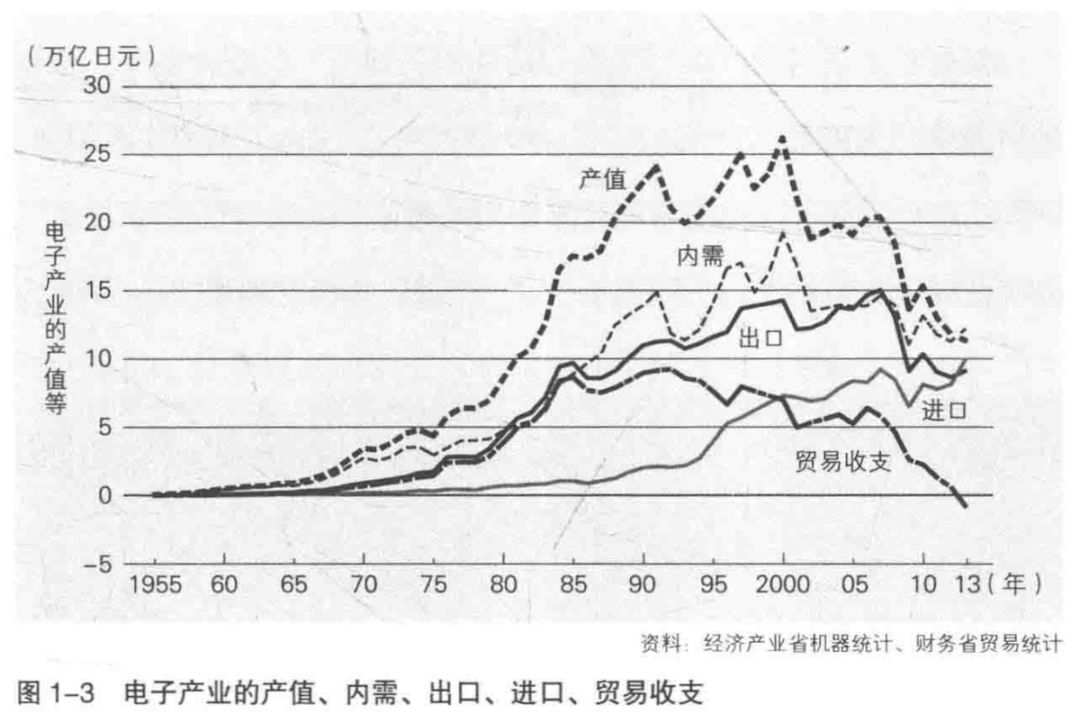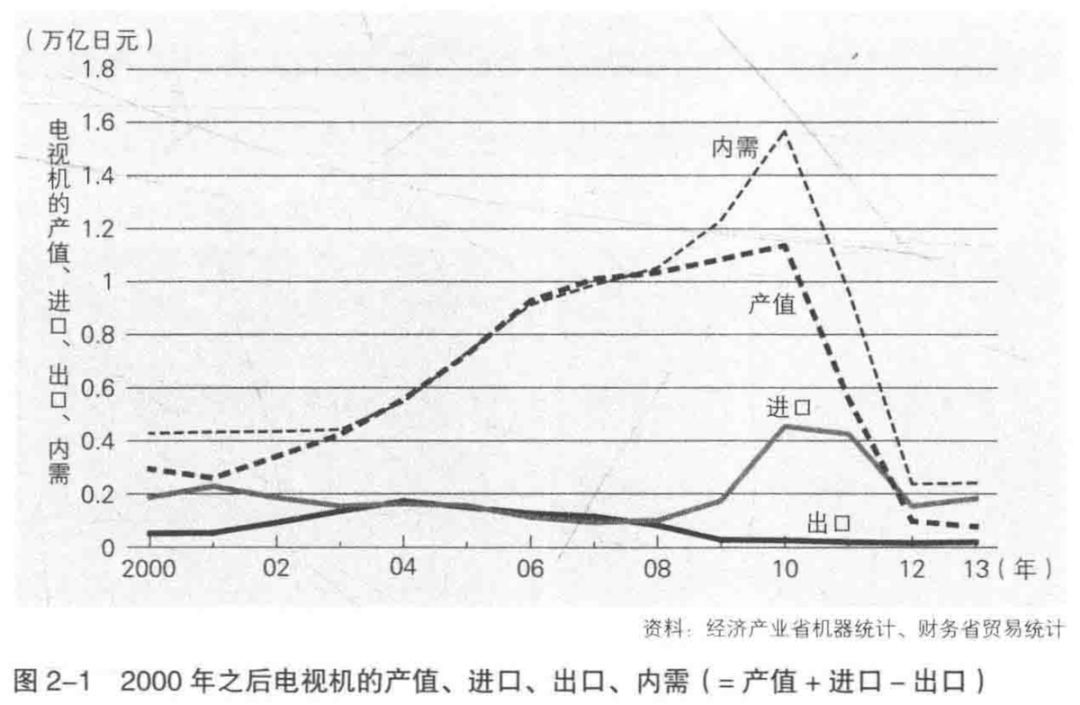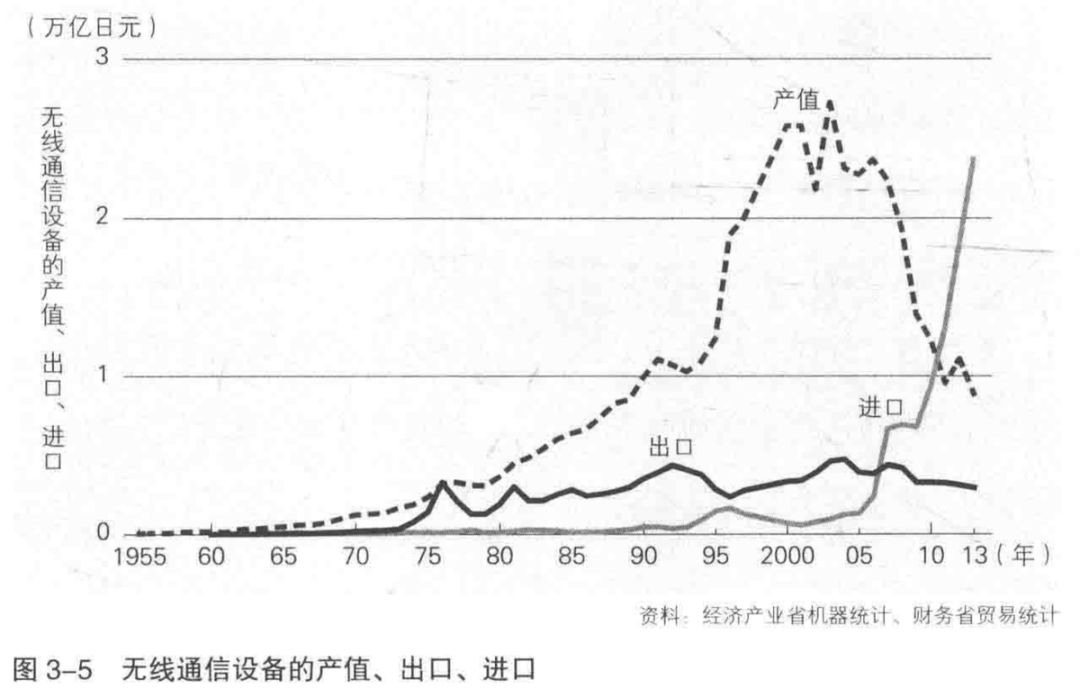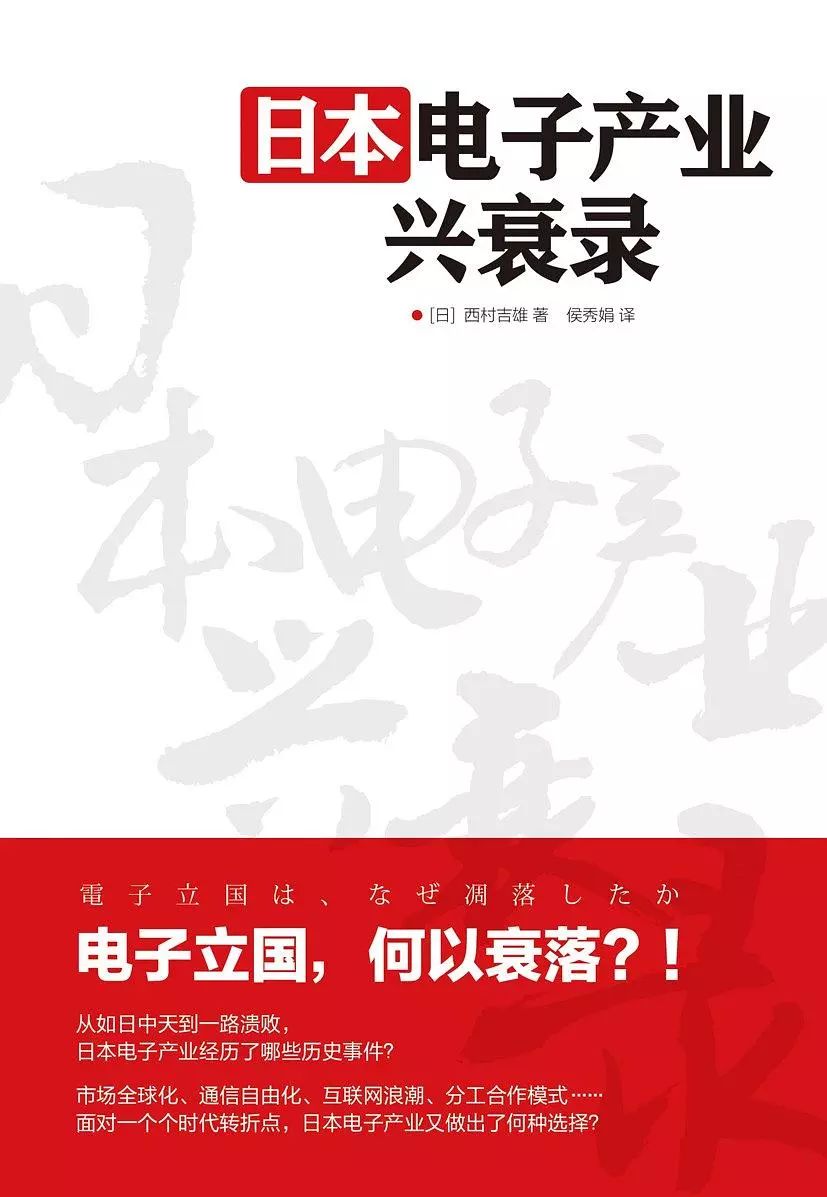The legend still exists and the glory is no longer.
Editor’s note: This article is from WeChat public account “deep-echo” (ID: deep-echo)< /a>, author Zhao Yu.
Core HighlightsHow much has the Japanese electronics industry declined?
The underlying cause of the decline of the Japanese electronics industry
The revelation behind the rise and fall
In 1987, Ren Zhengfei and several partners who had been in the doldrums established Huawei in a residential building in Nanyou New Village, Shenzhen. At that time, Huawei was not well-known at the time, and there was no such deep accumulation of core technology as it is today. The first barrel of gold after the establishment of the company was earned by the “selling” switch. Huawei’s situation at the time was the epitome of China’s electronics industry: in the years after the reform and opening up, the whole of China could not talk about any independent innovation in the electronics industry and technology. However, China has a large population and a vast market. Private companies that are swaying by the wind can make a lot of money by buying and selling electronic equipment. In Japan, where clothes are water, the situation is very different. From 1970 to 1985, Japan’s “heavy and growing” industry represented by the steel industry was in a downturn, and the “light and thin” industries such as semiconductors grew at a high speed. In just 15 years, the output value of the Japanese electronics industry has increased five-fold, domestic demand has tripled, and exports have increased by 11 times. It can be said,
1970-1985 is the golden age of the development of the Japanese electronics industry. After more than 30 years, the strength of China and Japan in the electronics industry has reversed. With the power of the Internet, there have been a number of outstanding companies in the electronics industry in China. Among them, Huawei, Xiaomi and other manufacturers can compete with competitors in the international market. But in recent years, Japan’s once proud electronics industry is heading for a defeat. It is no exaggeration to say that the Japanese electronics industry, which once made a huge contribution to the foreign exchange reserves with a trade surplus of 10 trillion yen, the Japanese electronics industry that once caused trade frictions because of over-selling products, the legend still exists. Brilliance is no longer. 
● At the company level, take the Panasonic, Sony, and Sharp giants as examples. The three companies announced in 2012 that their total deficit reached about 1.6 trillion yen, and losses and layoffs became the former brilliant electronics manufacturers. Normal.
● At the output level, the Japanese electronics industry reached its highest level in 2000, at about 26 trillion yen, and then fell sharply. By 2013, the value had fallen to 11 trillion yen, a decrease of half. More. In the 15 years from 1970 to 1985, the output value of the domestic electronics industry increased by a factor of five, while in the 15 years from 1985 to 2000 it only increased by 1.5 times. Japan had to rely on the growth of electronic parts exports to barely maintain a trade surplus, but in the end it was still unable to save the trend, and a trade deficit appeared in 2013.
● At the industrial level, Japan has completely lost in the electronic industry segment such as television, communications, computers, and semiconductors. Not only has the glorious history before 1985 become bleak, but it also lags significantly behind other countries in the world such as China, the United States, and South Korea. And area. In the semiconductor field, for example, Elpida and Renesas Technology of Japan were caught in a business crisis at the beginning of 2012. Later, Elpida filed for bankruptcy protection and was acquired by Micron Technology. Renesas Technology decided to accept Japanese industrial innovation. Agency (INCJ) and automotive company assistance.
The recession is so obvious that there is always a reason for it. In 2014, in order to summarize the structural changes in the Japanese electronics industry and explore the reasons for it, Nishimura Yoshio, who served as the editor of Nikkei Electronics for 12 years, conducted a website titled “Japan Electronics Industry” on the website of Nikkei BP. Series of series of the rise and fall of the book. Based on detailed statistics, the author reviews the history of honor and disgrace in the Japanese electronics industry for decades, and analyzes the reasons from various angles and profoundly, and has caused a big discussion in Japan.
After the serialization, the author further processed the relevant content. It is assembled and published in the book “The Rise and Fall of the Japanese Electronics Industry”. “Deep Ring” chose this book for in-depth study, trying to further demonstrate the whole process of the Japanese electronics industry from the day to the end of the road, and also try to compare the historical events encountered in Japan with the current development of China’s industry, and get valuable. Thinking. Why is the Japanese electronics industry so far? Can the defeat they experience be avoided? What lessons and lessons can we get from it?
“All the way down” Before 1970, the Japanese electronics industry grew up at a rapid rate due to focus on technology research and development and production excellence. In the international market competition, it is often able to take the lead. 1970-1985 was a golden period for the development of the Japanese electronics industry, during which time it was dominated by exports. In the following 1985-2000, trade balances began to decrease. After 2000, the Japanese electronics industry showed a general recession as a whole, with domestic output falling to half of its peak and trade turning into a deficit. A closer look at the performance of the Japanese electronics industry in the fields of television, communications, computers and semiconductors will reveal that all the exceptions are left behind by the times, and “behind the team” has become the key word for the development of Japanese companies. TV: Repelling the Internet, the industry refuses to integrate Looking back at history, we can see that 2010 is the last peak of the Japanese TV industry. 
(Hi-Vision, high definition)
TV sets produced in Japan have been exported to foreign countries as a very tight product, especially in the United States. At that time, if you were staying at a hotel in the United States, you would find that most of the rooms in the room were Japanese-made color TV sets. Japan has even had a trade friction with the United States for several years: in 1968, due to the good sales, the American Electronics Industry Association
(EIA)
An anti-dumping complaint was filed against a color television set from Japan. It is not good for a long time, the changes in the US policy toward Japan and the demise of the Japanese radio and television station have ended. In 1985, Soviet leader Gorbachev came to power and vigorously promoted reform and openness, reducing the confrontation between the Soviet Union and the United States. Due to the threat of the cold warWeakening, the United States no longer needs to support Japan in order to implement the Cold War policy, but instead of considering the interests of the country, it will curb the development of Japanese industry. Therefore, the export of Japanese TV sets decreased sharply after 1985, and imports began to increase slowly. However, the decline of the Japanese TV industry, the US’s suppression is certainly one of the reasons, but The main reason is that Japanese broadcasters are not willing to integrate with the Internet, missed the window of digitalization of TV signals. Since 1996, the Japanese TV industry has ushered in another development opportunity. At that time, the Internet began to spread slowly, so that the video originally played on the TV can also be played on the Internet. Faced with such a major change in the digitalization of television signals, the Japanese broadcast and television industry should have re-examined the relationship between the Internet and television sets and promoted the transformation in line with the situation. The fact is not the case. Japan’s radio and television industry has a rejection of the Internet. It believes that TV video broadcasts on the Internet is only an individual phenomenon. It also wants to maintain the difference between communication and broadcasting as much as possible, so that its status does not decline. Backfired, the real world of broadcasting is moving to webcasts little by little. For example, video service websites such as YouTube and NICONNICO animations have realized the function of “television broadcasting” soon, and they also frequently broadcast live. The exclusion of the Internet in the Japanese broadcast television sector has directly slowed down the digitalization of television signals. In the international competition, the United States, South Korea and Taiwan have taken full advantage of the digitalization of television signals, making television a modular product. Once the interface between the modules is standardized, the production speed of the TV can be greatly accelerated, and it is a matter of course to defeat the Japanese TV manufacturers. Communication: The business structure is rigid, and the ship is difficult to turn around. Since the Meiji government in 1869, Japan has completed the popularization of domestic telephones in the form of state-run for 100 years. Under the state-owned business structure, the customers of private enterprises are basically the national and Japanese telecom telephone communes.
(NTT)
Public institutions such as the Japan Broadcasting Association. The main job of private enterprises is to provide communication equipment and broadcasting equipment for these public institutions. The specifications and quantity of equipment are also determined by public utilities. Until 1985, Japan Telecom Telephone Commune Corporation
(NTT)
Turning to private, the communications industry began to liberalize, and new companies have joined the communications business. In the 1980s, the digitization of switching technology and transmission technology was completed. At that time, the industry would “digitally digitize all information and use the same communication network to handle the unified processing”.
(Integrated Services DigItal Network, ISDN)
The Japanese communications industry realized ISDN in 1988. However, in the same period of the commercialization of ISND in Japan, a wave of completely different developmental characteristics from the above-mentioned telephone technology has opened up a new era. This wave is mobile phones and the Internet. After the emergence of the Internet, it soon became a global social infrastructure. People can use it to make calls or send and receive mail. So I recently eliminated the ISDN, a comprehensive business digital network that was just built. It is. This is also what the industry did not think of when Japan introduced the policy of communication liberalization. From a global perspective, 80% of the mature commercial 2G technology used GSM communication technology specifications, but Japan adopted a unique specification – PDC, which made the Japanese mobile environment enter the ” Locked country status – foreign mobile phone manufacturers can not enter Japan, and Japanese mobile phone manufacturers are also difficult to open overseas markets. Although during this period, the Japanese mobile phone market has prospered due to the support of domestic demand, the Japanese mobile industry’s sense of presence in the world has become weaker. In the after-market smartphone market, it is even harder to see Japanese companies. 
(NTT)
Due to the difference in the business structure from the AT&T in the United States, the entire communications industry has gone down. Originally, telecommunications telephone commune
(NTT)
Not responsible for equipment production, these work is mainly carried out by the Institute of Electrical Communication. Centered on these research results, Japan’s state-run telecommunications telephone commune
(NTT)
And its member companies in technology and product developmentA cooperative relationship has been reached, which is the typical “escort fleet approach” in Japan. However, the ship is in a difficult position to turn around, and the technology, products, and market in the communication field have undergone great changes.
(NTT)
And its member companies lack the necessary flexibility. Their career development and research and development are more or less subject to state intervention. Devices such as switches that have been developed over several years are not necessarily needed by the Internet. Play an international role. As a result, in the face of these changes, in the United States, emerging companies continue to challenge and accumulate a lot of results. In Japan, the telecommunications telephone commune
(NTT)
As a provider of communication services, its status has not declined. But their influence in the emerging information and communication market is very weak, and no emerging companies are growing fast.
Computer: adhere to unique specifications, do not accept open market
In the 1950s, computers continued to develop in the direction of high performance and large-scale. IBM in the United States is the dominant player in the mainframe field. At that time, the Japanese computer-related policies were greatly influenced by IBM, so they were also particularly important. By the mid-1970s, the advent of microprocessors led to the creation and rapid development of prototypes for personal computers. After a few more years, the global computer market began to shift from mainframes to personal computers. However, the computer industry in Japan has strong Japanese characteristics. A representative example is the PC-9800 series computer launched by NEC Corporation of Japan, which even created an era in Japan. Originally, at the time, because of the differences in characters and bytes between Japanese and English, Japanese processing became a major obstacle for Japanese brands to enter Japan. The PC-9800 series computer introduced by NEC Japan can handle Japanese in an unobstructed manner, while other models can’t. The PC-9800 series has occupied most of Japan’s market share and formed a unique personal computer market. At the same time, other domestic PC companies in Japan have also adhered to their own routes, resulting in a personal computer market in Japan that is different from the world market. The problem of Japanese processing has also been resolved. In 1990, a DOS/V specification developed by IBM for Asian languages appeared. It can also handle Japanese in a convenient way, and IBM disclosed the specification to related companies in Japan. Even so, Japanese companies still insist on using their own unique specifications, and even continue to produce specialized machines that can process Japanese characters and sell them to the market for profit.


